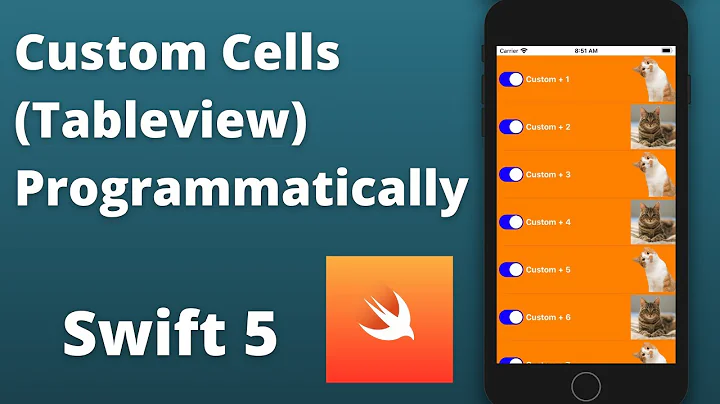How can I assign an ID to a view programmatically?
Solution 1
Android id overview
An Android id is an integer commonly used to identify views; this id can be assigned via XML (when possible) and via code (programmatically.) The id is most useful for getting references for XML-defined Views generated by an Inflater (such as by using setContentView.)
Assign id via XML
- Add an attribute of
android:id="@+id/somename"to your view. - When your application is built, the
android:idwill be assigned a uniqueintfor use in code. - Reference your
android:id'sintvalue in code using "R.id.somename" (effectively a constant.) -
this
intcan change from build to build so never copy an id fromgen/package.name/R.java, just use "R.id.somename". - (Also, an
idassigned to aPreferencein XML is not used when thePreferencegenerates itsView.)
Assign id via code (programmatically)
- Manually set
ids usingsomeView.setId(int); - The
intmust be positive, but is otherwise arbitrary- it can be whatever you want (keep reading if this is frightful.) - For example, if creating and numbering several views representing items, you could use their item number.
Uniqueness of ids
-
XML-assignedids will be unique. - Code-assigned
ids do not have to be unique - Code-assigned
ids can (theoretically) conflict withXML-assignedids. - These conflicting
ids won't matter if queried correctly (keep reading).
When (and why) conflicting ids don't matter
-
findViewById(int)will iterate depth-first recursively through the view hierarchy from the View you specify and return the firstViewit finds with a matchingid. - As long as there are no code-assigned
ids assigned before an XML-definedidin the hierarchy,findViewById(R.id.somename)will always return the XML-defined View soid'd.
Dynamically Creating Views and Assigning IDs
- In layout XML, define an empty
ViewGroupwithid. - Such as a
LinearLayoutwithandroid:id="@+id/placeholder". - Use code to populate the placeholder
ViewGroupwithViews. - If you need or want, assign any
ids that are convenient to each view. Query these child views using placeholder.findViewById(convenientInt);
API 17 introduced
View.generateViewId()which allows you to generate a unique ID.
If you choose to keep references to your views around, be sure to instantiate them with getApplicationContext() and be sure to set each reference to null in onDestroy. Apparently leaking the Activity (hanging onto it after is is destroyed) is wasteful.. :)
Reserve an XML android:id for use in code
API 17 introduced View.generateViewId() which generates a unique ID. (Thanks to take-chances-make-changes for pointing this out.)*
If your ViewGroup cannot be defined via XML (or you don't want it to be) you can reserve the id via XML to ensure it remains unique:
Here, values/ids.xml defines a custom id:
<?xml version="1.0" encoding="utf-8"?>
<resources>
<item name="reservedNamedId" type="id"/>
</resources>
Then once the ViewGroup or View has been created, you can attach the custom id
myViewGroup.setId(R.id.reservedNamedId);
Conflicting id example
For clarity by way of obfuscating example, lets examine what happens when there is an id conflict behind the scenes.
layout/mylayout.xml
<?xml version="1.0" encoding="utf-8"?>
<LinearLayout
xmlns:android="http://schemas.android.com/apk/res/android"
android:layout_width="match_parent"
android:layout_height="match_parent"
android:orientation="vertical" >
<LinearLayout
android:id="@+id/placeholder"
android:layout_width="fill_parent"
android:layout_height="wrap_content"
android:orientation="horizontal" >
</LinearLayout>
To simulate a conflict, lets say our latest build assigned R.id.placeholder(@+id/placeholder) an int value of 12..
Next, MyActivity.java defines some adds views programmatically (via code):
int placeholderId = R.id.placeholder; // placeholderId==12
// returns *placeholder* which has id==12:
ViewGroup placeholder = (ViewGroup)this.findViewById(placeholderId);
for (int i=0; i<20; i++){
TextView tv = new TextView(this.getApplicationContext());
// One new TextView will also be assigned an id==12:
tv.setId(i);
placeholder.addView(tv);
}
So placeholder and one of our new TextViews both have an id of 12! But this isn't really a problem if we query placeholder's child views:
// Will return a generated TextView:
placeholder.findViewById(12);
// Whereas this will return the ViewGroup *placeholder*;
// as long as its R.id remains 12:
Activity.this.findViewById(12);
*Not so bad
Solution 2
You can just use the View.setId(integer) for this. In the XML, even though you're setting a String id, this gets converted into an integer. Due to this, you can use any (positive) Integer for the Views you add programmatically.
According to
ViewdocumentationThe identifier does not have to be unique in this view's hierarchy. The identifier should be a positive number.
So you can use any positive integer you like, but in this case there can be some views with equivalent id's. If you want to search for some view in hierarchy calling to setTag with some key objects may be handy.
Credits to this answer.
Solution 3
Yes, you can call setId(value) in any view with any (positive) integer value that you like and then find it in the parent container using findViewById(value). Note that it is valid to call setId() with the same value for different sibling views, but findViewById() will return only the first one.
Related videos on Youtube
DuyguK
Updated on September 30, 2020Comments
-
DuyguK over 3 years
In an XML file, we can assign an ID to a view like
android:id="@+id/something"and then callfindViewById(), but when creating a view programmatically, how do I assign an ID?I think
setId()is not the same as default assignment.setId()is extra.Can anybody correct me?
-
 Ciro Santilli OurBigBook.com over 8 yearsSubset: how to generate unique IDs: stackoverflow.com/questions/1714297/…
Ciro Santilli OurBigBook.com over 8 yearsSubset: how to generate unique IDs: stackoverflow.com/questions/1714297/…
-
-
Peter Ajtai over 12 yearsNote that you have to use an integer greater than zero.
-
 Aniket Thakur over 10 yearsthough findViewById(int) will iterate recursively through the view hierarchy from the View you specify and return the first View it finds with a matching id specified in 1st answer is most accurate.
Aniket Thakur over 10 yearsthough findViewById(int) will iterate recursively through the view hierarchy from the View you specify and return the first View it finds with a matching id specified in 1st answer is most accurate. -
AllDayAmazing over 10 yearsIn addition to this, it might be useful for someone in coding similiar solutions to be aware of View.generateViewId() in API > 17 for non-conflicting IDs
-
Karu about 10 yearsNote that
findViewByIddoes a depth-first exploration, so "As long as there are no code-assigned ids assigned above an XML-defined id in the hierarchy" isn't technically correct; it's "before" rather than "above". -
Karu about 10 yearsYeah, calling
findViewByIdon a known ancestor is a good idea for performance reasons, but it doesn't guarantee it will find an immediate child if there is one with the correct ID. -
ThomasW about 7 yearsIn more recent versions of the Android developer tools, programmatically setting the ID to an arbitrary value will be flagged as a compiler error. The value is expected to be an actual resource ID.
-
CodeShane about 7 yearsI believe this was even the case when I answered this five years ago - that's why the custom id's had to be defined in
ids.xml. For truly arbitrary ID's, useView.generateViewId()(API 17). (Please clarify your point if I've missed it.) -
UrK almost 5 years> (Also, an id assigned to a Preference in XML is not used when the Preference generates its View.) Very interested about that. My code inherits from
PreferenceDialogFragmentCompatit seems like ids fromR.iddo not match the ones view hierarchy. This way I cannot find the view by ID.










